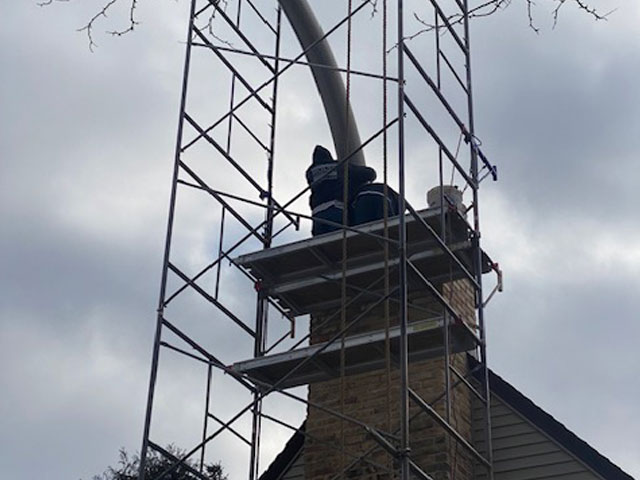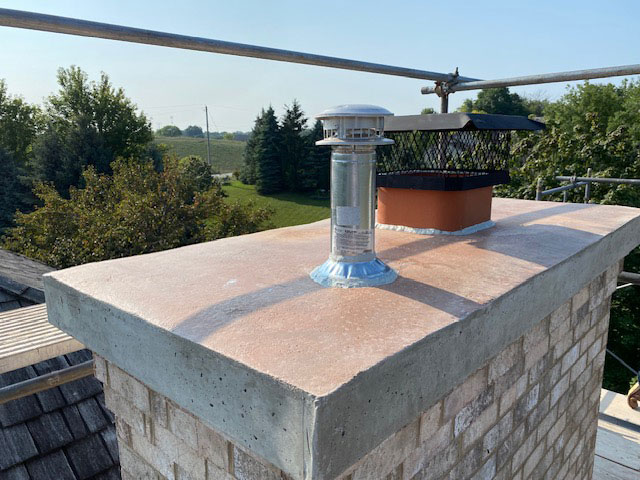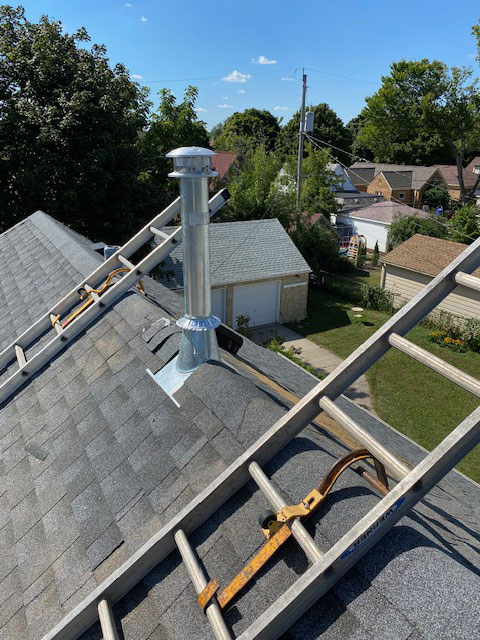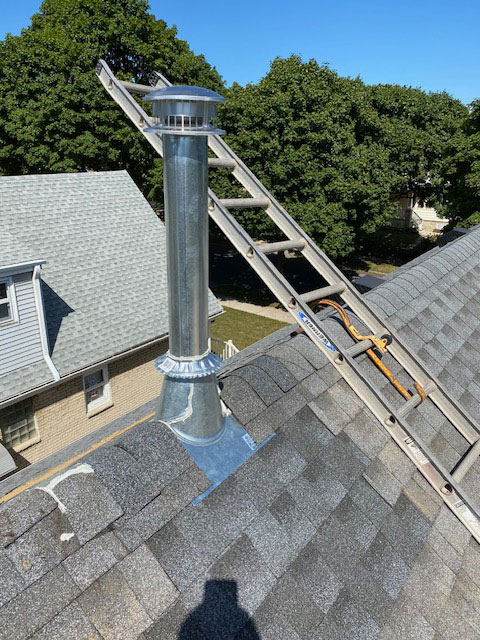
Chimney Liners
A chimney liner, also known as a flue liner, is a protective lining installed inside a chimney flue. Its purpose is to provide a smooth, insulated, and durable surface for the passage of combustion gases, while also protecting the chimney structure.






Chimney liners serve several important functions:
- Safety: A properly installed chimney liner enhances safety by preventing the transfer of heat from the chimney to surrounding combustible materials. It helps reduce the risk of chimney fires and minimizes the potential for heat damage to the chimney structure itself.
- Improved Draft: A well-designed chimney liner promotes proper draft or airflow within the chimney. It helps to maintain a consistent and efficient flow of combustion gases, allowing for optimal performance of the heating appliance or fireplace connected to the chimney.
- Corrosion Protection: Certain types of fuel, such as oil or gas, can produce corrosive byproducts during combustion. The chimney liner acts as a protective barrier, preventing these corrosive substances from directly contacting and damaging the chimney’s masonry or other structural components.
- Combustion Gas Ventilation: The chimney liner provides a clear path for the exhaust gases to exit the building safely. It helps prevent the gases from seeping into the living space, ensuring proper ventilation and maintaining indoor air quality.
Chimney liners are available in various materials, including stainless steel, clay tile, cast-in-place, and aluminum. The selection of the liner material depends on factors such as the type of fuel being burned, the size and configuration of the chimney, local building codes, and the specific requirements of the heating system.
Installation or replacement of a chimney liner should be carried out by a qualified professional who can assess the chimney’s condition, select the appropriate liner type, and ensure proper sizing and installation. Regular inspection and maintenance of the chimney liner are important to detect any signs of deterioration or damage and to address them promptly.
In summary, a chimney liner is a protective lining installed inside a chimney flue, providing safety, improved draft, corrosion protection, and proper ventilation. It plays a vital role in maintaining the efficiency and safety of a chimney system.
Chimney Liners
A chimney liner, also known as a flue liner, is a protective lining installed inside a chimney flue. Its purpose is to provide a smooth, insulated, and durable surface for the passage of combustion gases, while also protecting the chimney structure.






Chimney liners serve several important functions:
- Safety: A properly installed chimney liner enhances safety by preventing the transfer of heat from the chimney to surrounding combustible materials. It helps reduce the risk of chimney fires and minimizes the potential for heat damage to the chimney structure itself.
- Improved Draft: A well-designed chimney liner promotes proper draft or airflow within the chimney. It helps to maintain a consistent and efficient flow of combustion gases, allowing for optimal performance of the heating appliance or fireplace connected to the chimney.
- Corrosion Protection: Certain types of fuel, such as oil or gas, can produce corrosive byproducts during combustion. The chimney liner acts as a protective barrier, preventing these corrosive substances from directly contacting and damaging the chimney’s masonry or other structural components.
- Combustion Gas Ventilation: The chimney liner provides a clear path for the exhaust gases to exit the building safely. It helps prevent the gases from seeping into the living space, ensuring proper ventilation and maintaining indoor air quality.
Chimney liners are available in various materials, including stainless steel, clay tile, cast-in-place, and aluminum. The selection of the liner material depends on factors such as the type of fuel being burned, the size and configuration of the chimney, local building codes, and the specific requirements of the heating system.
Installation or replacement of a chimney liner should be carried out by a qualified professional who can assess the chimney’s condition, select the appropriate liner type, and ensure proper sizing and installation. Regular inspection and maintenance of the chimney liner are important to detect any signs of deterioration or damage and to address them promptly.
In summary, a chimney liner is a protective lining installed inside a chimney flue, providing safety, improved draft, corrosion protection, and proper ventilation. It plays a vital role in maintaining the efficiency and safety of a chimney system.

